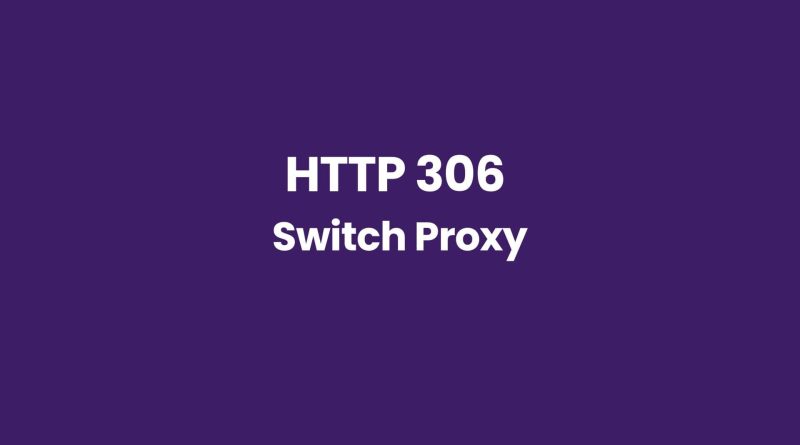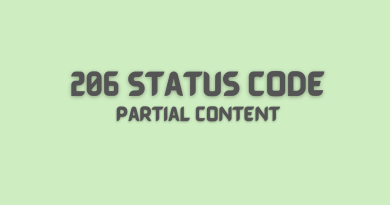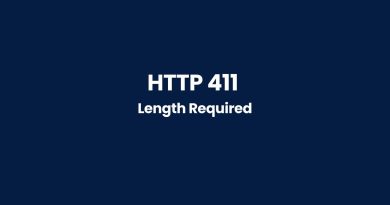HTTP 306 Switch Proxy: A Comprehensive Guide To Fix It
The Hypertext Transfer Protocol (HTTP) is a fundamental element of the internet, enabling communication between web servers and browsers. In order to ensure the effective delivery of content, HTTP employs various status codes which indicate whether requests have been successfully completed or not. One such code is Status Code 306 Switch Proxy – but what is it, and why does it occur? This article provides an in-depth guide on how to fix this issue so that users can take back control of their online experience.
When a browser attempts to access a website or page, several processes are set into motion behind the scenes. The request must be received by the server and then sent back with either a successful response or one indicating an error has occurred. Depending on the nature of this error, different HTTP status codes may be issued as part of the response header. Of particular relevance here is Status Code 306 Switch Proxy.
What Is The Http 306 Switch Proxy?
HTTP Status Code 306 Switch Proxy is not a standard status code in the HTTP/1.1 specification and is not widely used. However, it is sometimes used by some proxy servers to indicate that the client should switch to a different proxy server.
The 306 status code is typically used in situations where a proxy server is overloaded or unavailable and requests the client to switch to a different proxy server. When a client receives a 306 status code, it should follow the redirection instruction provided by the server and make a new request to the specified proxy server.
However, since this status code is not widely used, many client applications may not recognize it, and the behavior of the application when encountering a 306 status code may vary depending on the implementation. In general, if you encounter a 306 status code, it is best to consult with the server administrator or network administrator to understand the reason for the status code and how to proceed.
Causes Of An Http 306 Switch Proxy
- Overloaded or unavailable proxy server: A proxy server may be overloaded or unavailable, causing the client to receive a 306 status code.
- Incorrect proxy server configuration: The proxy server may be misconfigured, causing the client to receive a 306 status code.
- Proxy server redirect: The proxy server may redirect the client to a different proxy server, causing the client to receive a 306 status code and be instructed to redirect to the new proxy server.
- Non-standard use of status codes: Some proxy servers may use non-standard HTTP status codes, including the 306 status code, which may cause confusion for client applications that are not expecting such codes.
- Network issues: There may be network issues or connectivity problems that cause the client to receive a 306 status code.
How To Fix Http 306 Switch Proxy
- Check your network connection: Ensure that your device is connected to the internet and that your network connection is stable.
- Check your proxy server settings: If you are using a proxy server, check that the settings are correct and that the proxy server is functioning properly.
- Clear your browser cache: Clearing your browser cache may resolve the issue if the error is related to a problem with cached data.
- Try a different browser: If the error is occurring in one browser, try using a different browser to see if the issue persists.
- Contact the server administrator: If you continue to encounter the HTTP 306 error, contact the server administrator or network administrator to investigate the issue.
- Use a different proxy server: If you have access to multiple proxy servers, try using a different proxy server to see if the issue persists.
- Update your client software: If you are using a custom client application that is not recognizing the HTTP 306 status code, consider updating the software to the latest version.
Similar Http Status Codes To Http 306
Similar to the HTTP 306 status code, other codes indicate that a requested resource resides temporarily in another location. In particular, 307 and 308 are both related codes that can be encountered when making post requests. The 307 status code indicates that future requests should use the same request header field as was used for the original call while the 308 status code states that all future requests must utilize an identical range request header field value. If either of these responses is received, it may indicate that the initial response was invalid or incomplete.
Additionally, 304 is an important related code to know about when dealing with HTTP status codes. This code tells us that no updates were made to the requested resource since its last access time and therefore there will not be any changes within its content even if we make subsequent calls to it. It also assists in providing timely responses so users do not expect new information every time they send a request – allowing them to save bandwidth usage over multiple repeated queries instead.
All HTTP status codes by categories
Informational responses
(100 – 199)



